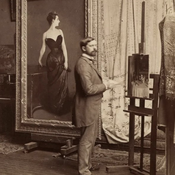|
|
|
-
-
Dates: 2/3/2026 - 2/3/2026
Day of the Week: Tu
Number of Sessions: 1
Time: 10:00 AM - 11:15 AM
Fee: $85.00
Instructor: Page Knox
Building: Walking Tours
Address: , NY
Email this class to a friend
 Emily Sargent: Portrait of a Family, running through March 8, 2026, showcases Emily Sargent’s recently rediscovered watercolors alongside the portraits by her older brother John Singer Sargent and the art of their mother Mary Newbold Sargent. Drawn entirely from the Met's extensive collection, the exhibit explores the divergent paths of the sibling artists and reveals the challenges female artists experienced in the late nineteenth century. Intended as a complement to the Met’s Sargent and Paris exhibit that focuses exclusively on John Singer Sargent, this exhibition celebrates the works of his lesser-known sister. The tour will also include works by Sargent in other galleries. PLEASE NOTE:
- Meeting place Metropolitan Museum.
- The precise meeting location will be provided to registered students a few days before the event.
- Students must make their own arrangements to get to the meeting place.
|
|
|
|
|
|
|